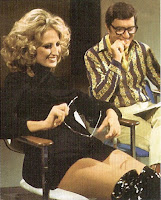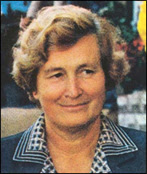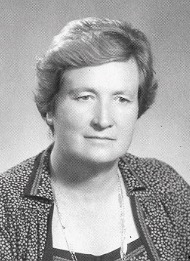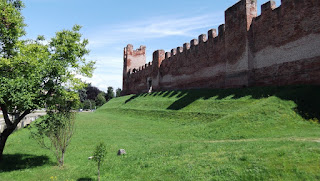 |
| Joe Sentieri began his career on ocean liners in the 1950s, soon becoming popular with holiday-makers |
Career remembered for international hit song
The singer, songwriter and actor Joe Sentieri, who released seven albums and around 100 singles over the course of a career spanning more than a quarter of a century, died on this day in 2007 in the Adriatic coastal city of Pescara.
Although he enjoyed considerable success in his own right, he tends to be remembered most for his association with an Italian song that became an international hit after it was translated into English.
Sentieri’s 1961 song Uno dei tanti - One of the Many - was given English lyrics by the American producing partners Jerry Leiber and Mike Stoller and repackaged as I (Who Have Nothing).
 |
| Sentieri enjoyed a number of hits in Italy but is best known for a song that brought success for others |
Countless other cover versions were released over time, by performers as diverse as Petula Clark and Joe Cocker, Katherine Jenkins and Gladys Knight. The song has also featured in the hit US television series, The Sopranos.
Sentieri was born Rino Luigi Sentieri in Genoa in March 1925. He grew up in a working-class neighbourhood in the port area and was sent out to work at a young age, going into the mountains above the city where there were opencast coal mines, loading bags of coal on to a truck to be sold by his father.
His musical talent emerged after he was given a mandolin as a present and taught himself to play. He learned the accordion, too, and helped supplement the family income by busking. He also developed a good singing voice, and in the early 1950s began to find work on the cruise ships and transatlantic liners that regularly sailed from Genoa to the Americas.
 |
| Sentieri with Wilma De Angelis at the 1960 Festival di San Remo |
Back in Italy he made his debut on dry land in 1956 as a singer of the orchestra of Corrado Bezzi, with whom he also recorded some 78rpm records for the Italian RCA label, under the name of Rino Sentieri.
His career accelerated after he took part in the Festival of Musichiere at the Arena di Verona in 1959, with a song written by Domenico Modugno, who also provided him with the winning entry - Piove (ciao ciao bambina) - at the prestigious Canzonissima song contest of the same year, by which time he had decided on Joe as a stage name.
As well as making numerous records, Sentieri was also chosen to sing the theme song for the 1960 Olympic Games of Rome, entitled Welcome To Rome, and gained a number of parts in movies, including a couple for the director Damiano Damiani, one of which - La moglie più bella (The Most Beautiful Wife) - featured the screen debut at 14 of the future star Ornella Muti.
He decided to end his career in the 1980s so that he could devote more time to his love of painting, a hobby he had maintained since childhood. He and his partner, Dora, moved to Pescara, where he would exhibit from time to time. He accepted some invitations to sing or appear on television and actually released a collection of Genovese songs in 1996, although he preferred a quiet life.
He ended his days in considerably reduced circumstances compared with peak of his career, mainly as a result of bad luck with his investments. He spent 40 million lire on some land at Rapallo which was then compulsorily purchased by the government for 16 million, saw his record shop go bust and had his fingers burnt on another property investment, in a country club outside Genoa.
As a result, he was left to live on little more than a €700-a-month state pension, before premier Silvio Berlusconi decided he should benefit to the tune of an extra €1,000 per month as a result of the Becchalli Law, which allows governments to provide special help to “illustrious citizens” who have fallen on hard times.
Sentieri died in a clinic in Pescara a few weeks after suffering a stroke, at the age of 82.
 |
| Gabriele D'Annunzio's childhood home in Pescara contains a museum dedicated to his life |
Pescara, a city of almost 120,000 people on the Adriatic in the Abruzzo region, is known for its 10 miles of clean, sandy beaches, yet is only 50km (31 miles) from the Gran Sasso mountain range, the snow-capped peaks of which are visible even from the coast on a clear winter’s day. The city is the birthplace of the poet, patriot and military leader, Gabriele D’Annunzio. His childhood home, the Casa Natale di Gabriele D’Annunzio, which can be found in the historic centre of the city on the south side of the Fiume Pescara, which bisects the city, houses a museum about his life and works. The Museo delle Genti d'Abruzzo has exhibitions on regional industries like ceramics and olive oil. Pieces by Miró and Picasso are on view at the Vittoria Colonna Museum of Modern Art.
 |
| The Piazza de Ferrari in the centre of Genoa is always a hub of lively activity |
The port city of Genoa, known in Italy as Genova, is the capital of the Liguria region. It has a rich history as a powerful trading centre with considerable wealth built on its shipyards and steelworks, but also boasts many fine buildings, many of which have been restored to their original splendour. The Doge's Palace, the 16th century Royal Palace and the Romanesque-Renaissance style San Lorenzo Cathedral are just three examples. The area around the restored harbour area offers a maze of fascinating alleys and squares, enhanced recently by the work of Genoa architect Renzo Piano, and a landmark aquarium, the largest in Italy.
More reading:
Patty Pravo - the '60s star still performing today
Italy's biggest-selling recording artist of all time
How Domenico Modugno wrote the iconic Italian ballad Volare
Also on this day:
1799: The birth of Alessandro La Marmora, founder of Italy's Bersaglieri corps
1968: The birth of popular politician Luca Zaia
1969: The birth of Gianluigi Lentini, once the world's most expensive footballer
(Picture credit: D'Annunzio house by Rae Bo; Fountain by Roberta de roberto; via Wikimedia Commons)
Home









